Trade union membership certificates
They heyday of the trade union emblem was from 1870 to 1900, when many unions produced ornate, colourful membership certificates. These often featured the work carried out by their members, and sometimes depicted prominent early union leaders. Typically, they drew on classical or biblical visual themes, and may also have included a carefully chosen religious or secular slogan. Members might well hang the framed certificate on the wall of their home, both as a symbol of pride in their union membership and as a reassurance to their family that they would be taken care of by their union’s friendly society benefits in the event of illness or death. Such certificates continued well into the twentieth century, and were usually issued to members at a price, but were gradually replaced by cheaper lapel badges.
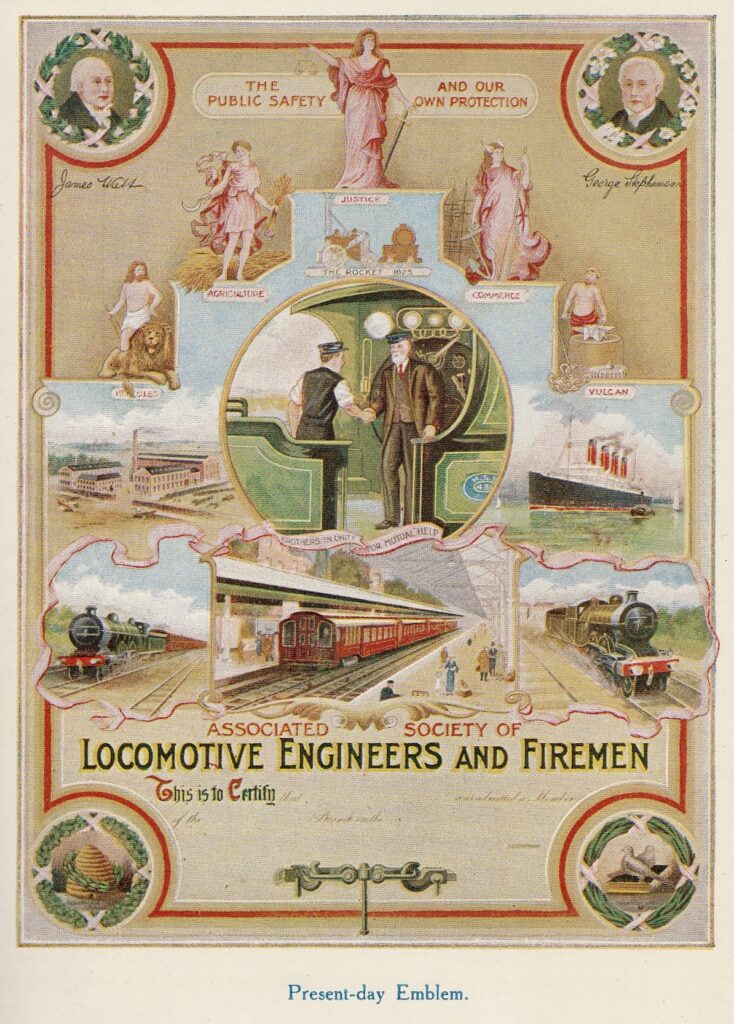
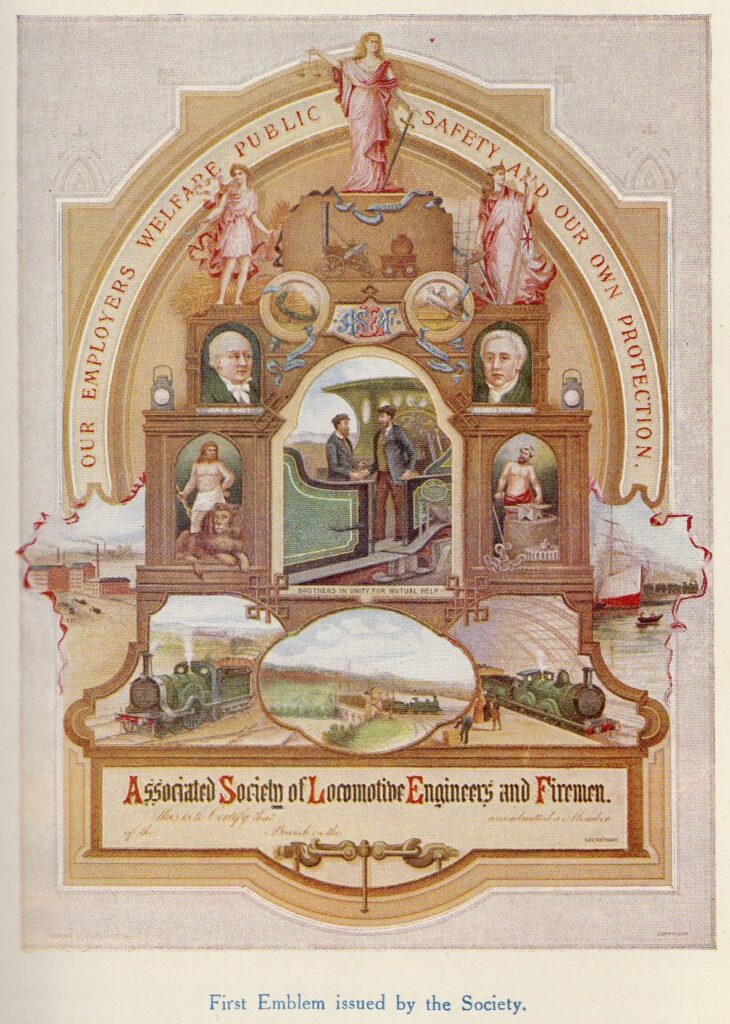

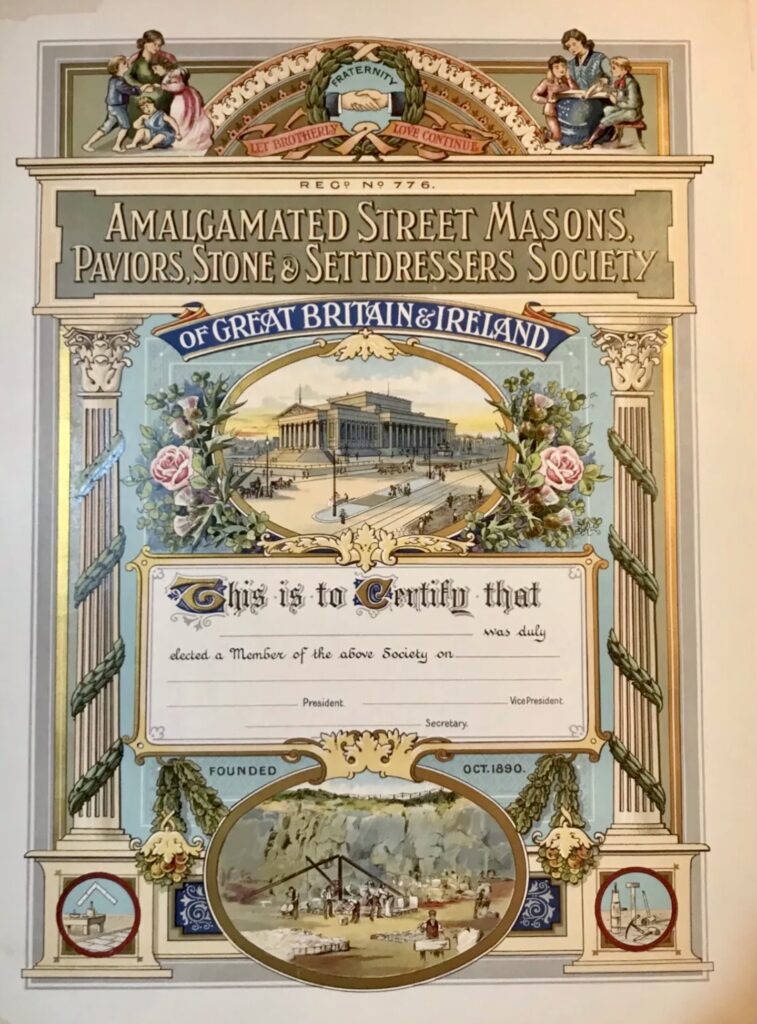
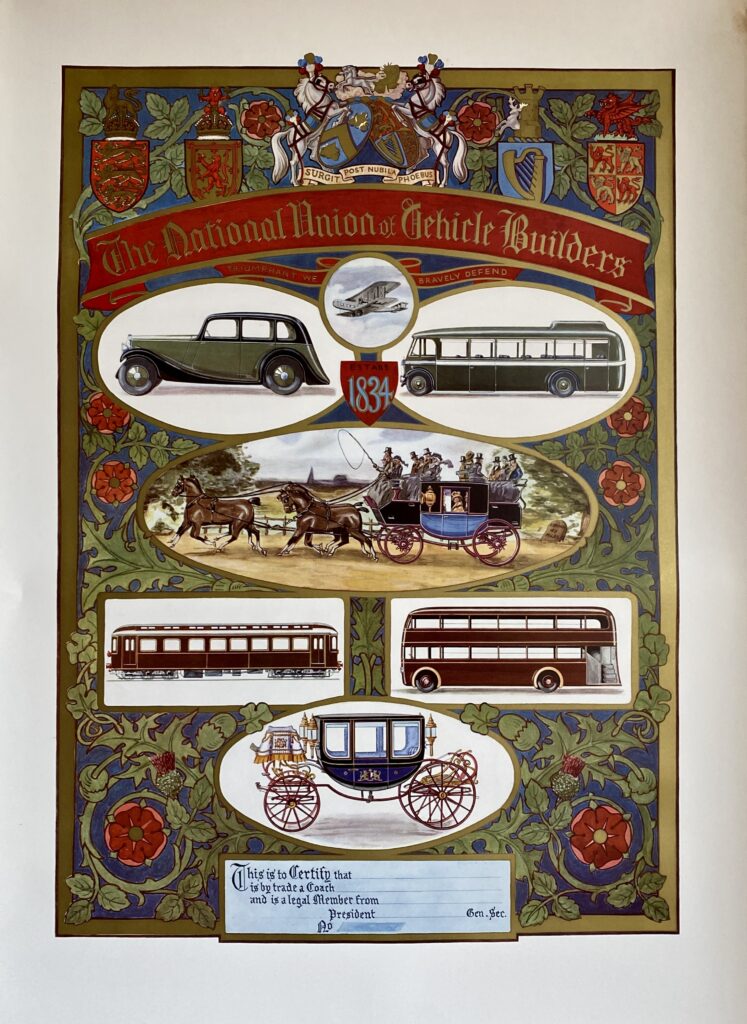
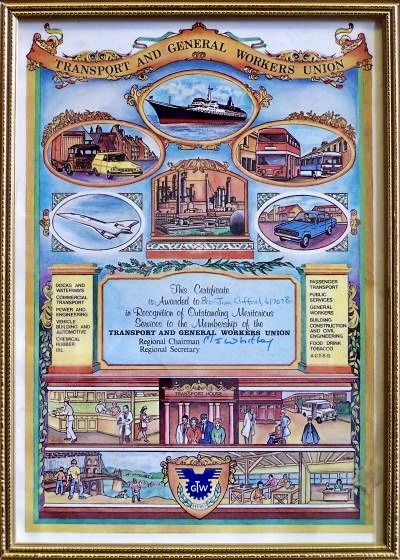
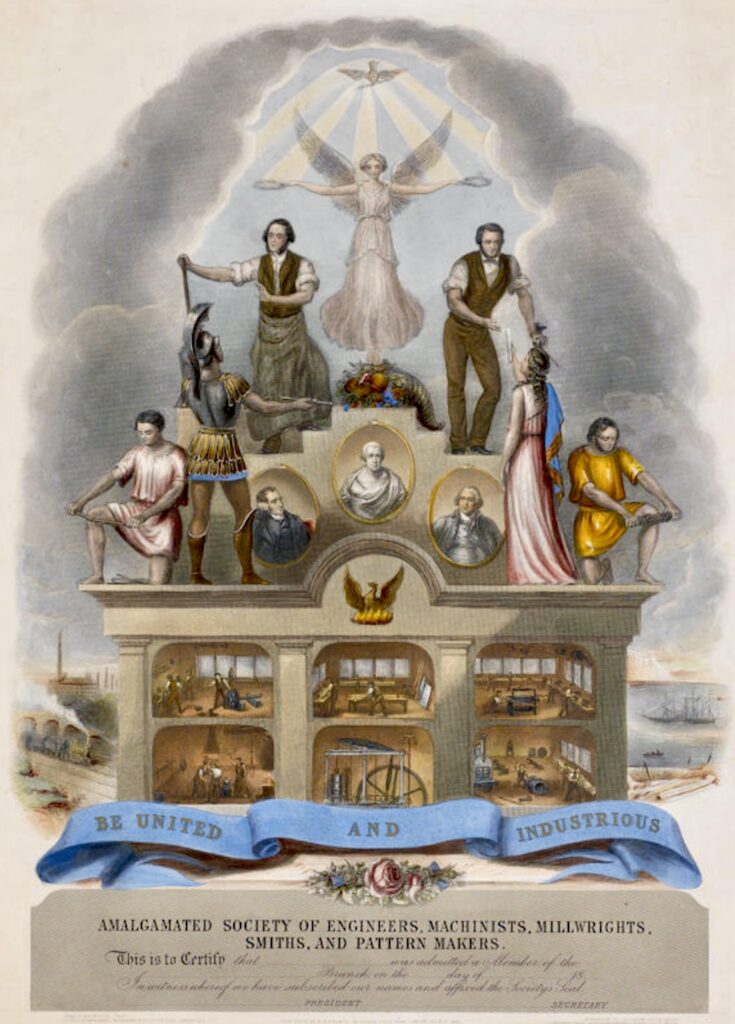
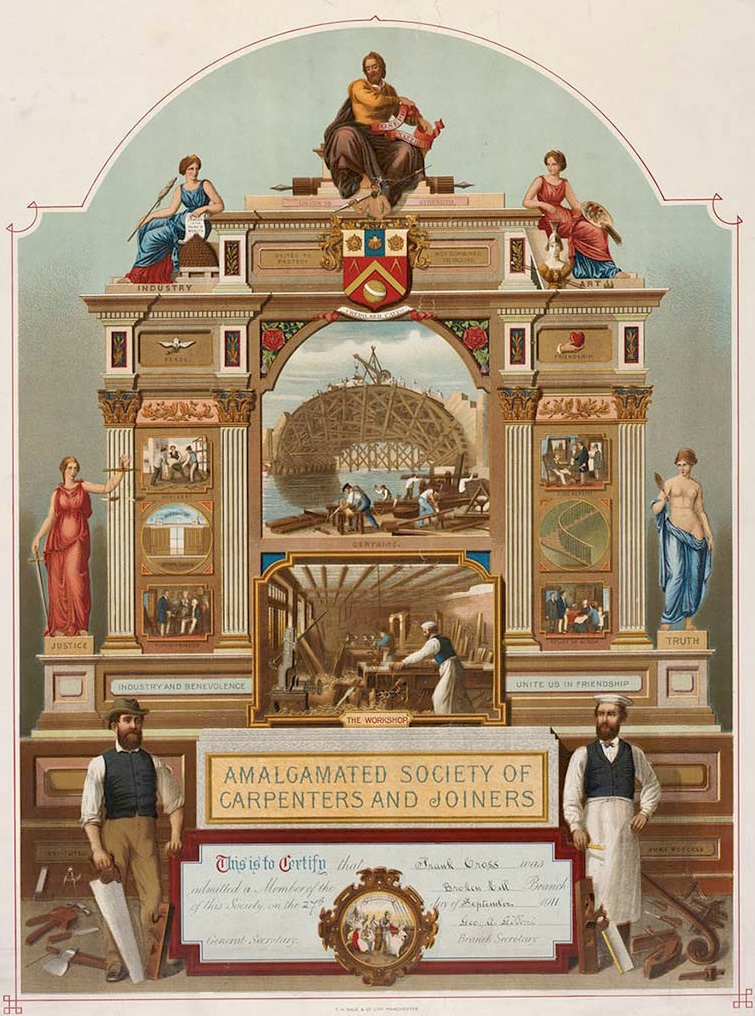
The certificate produced by the Associated Society of Locomotive Engineers and Firemen and featuring the art deco Silver Link loco (top right) features on the Society for the Study of Labour History website: Steaming ahead: trade union imagery that speaks of power and modernity.
The certificate of the National Union of Vehicle Builders (middle row) also appears on the Society for the Study of Labour History website in a discussion of the use of trade union emblems. Planes, trains and automobiles: rethinking Victorian union imagery in the 1930s.
Banner Bright, by John Gorman (Allen Lane, 1973) is the classic study of trade union emblems. Although it focuses as the title suggests on trade union banners, the imagery used was often very similar to that in the same unions’ membership certificates.
The Art and Ideology of the Trade Union Emblem 1850-1925, by Annie Ravenhill-Johnson, edited by Paula James (Anthem Press, 2014) is a fascinating study of trade union imagery.